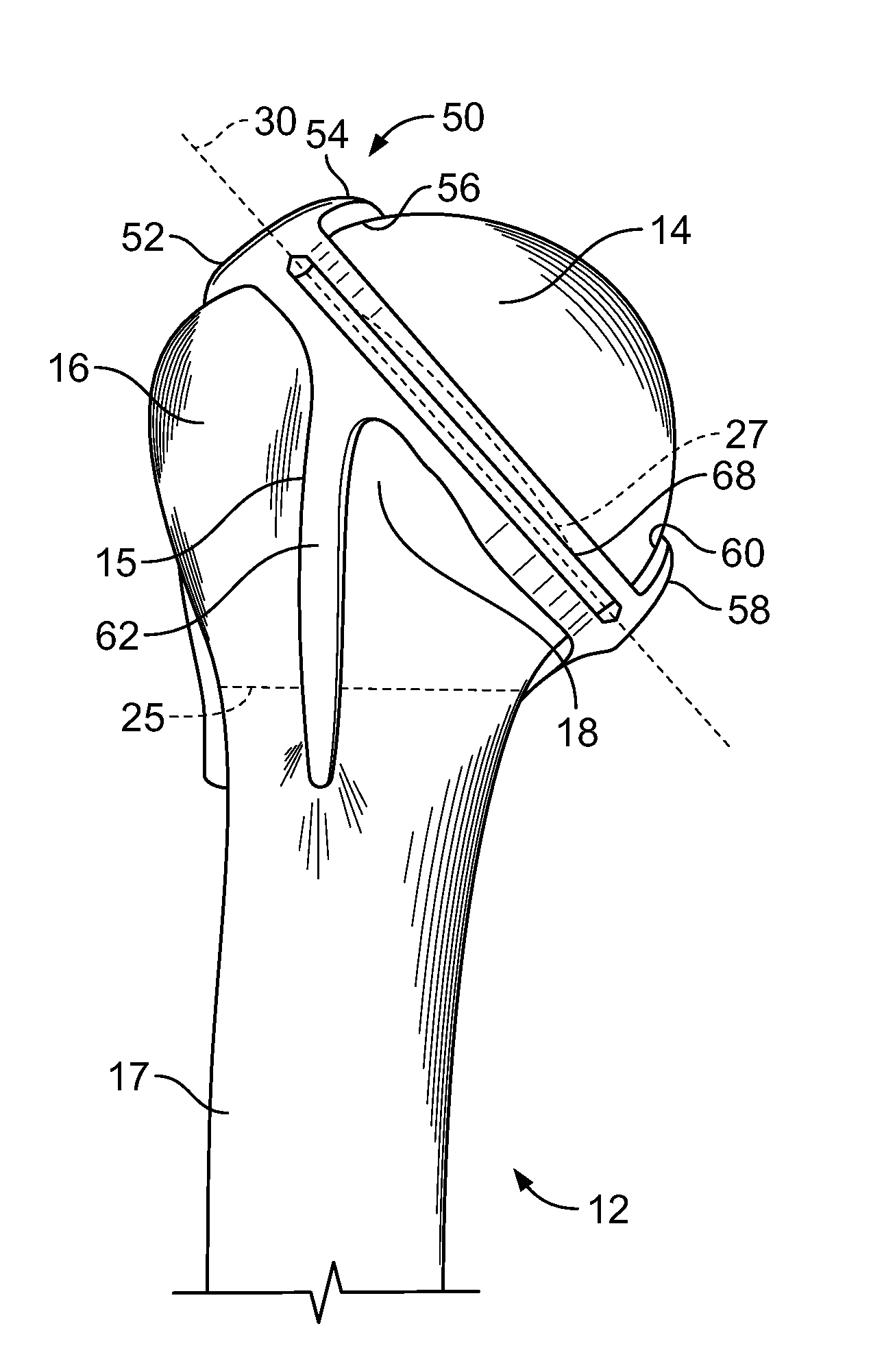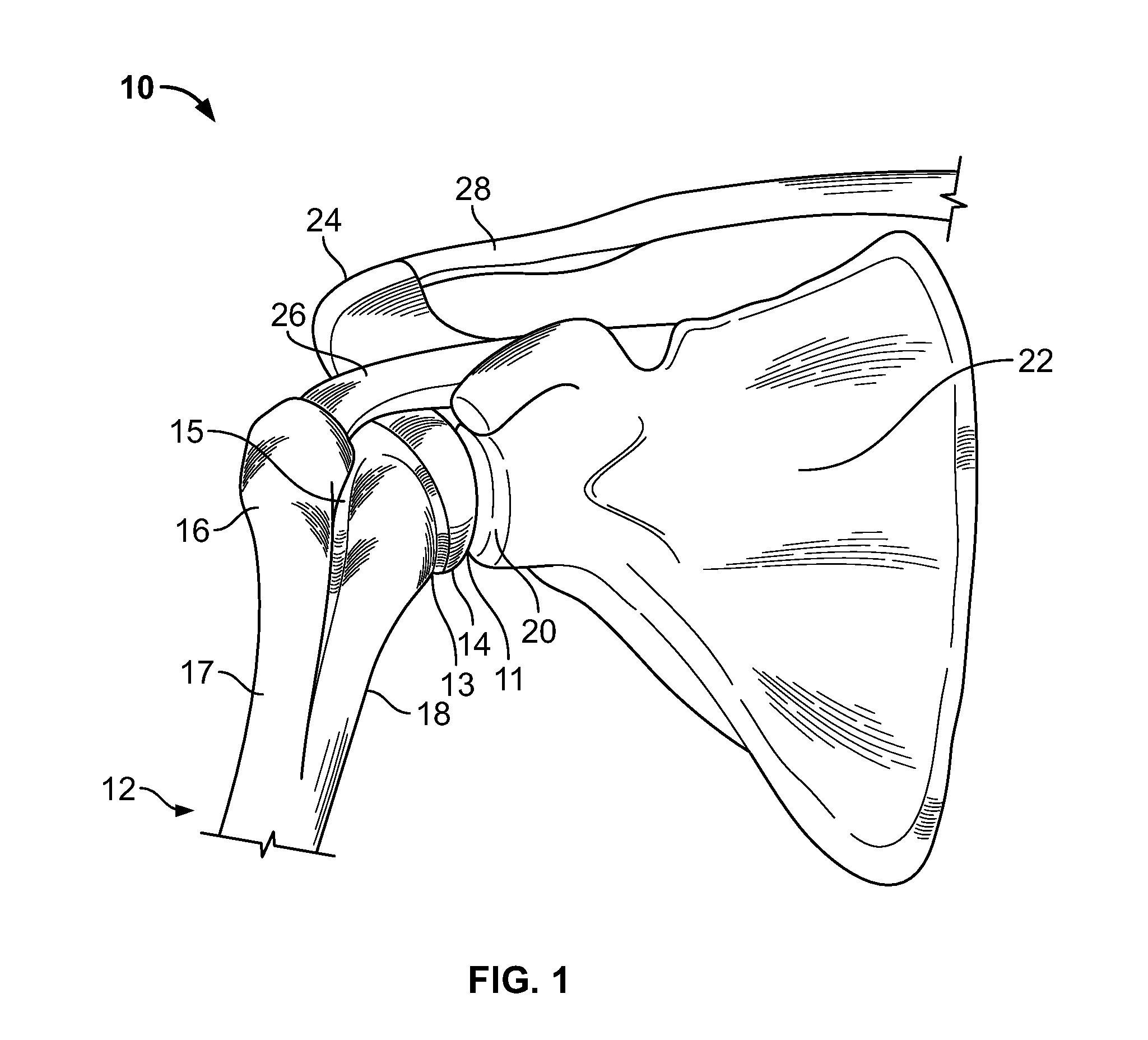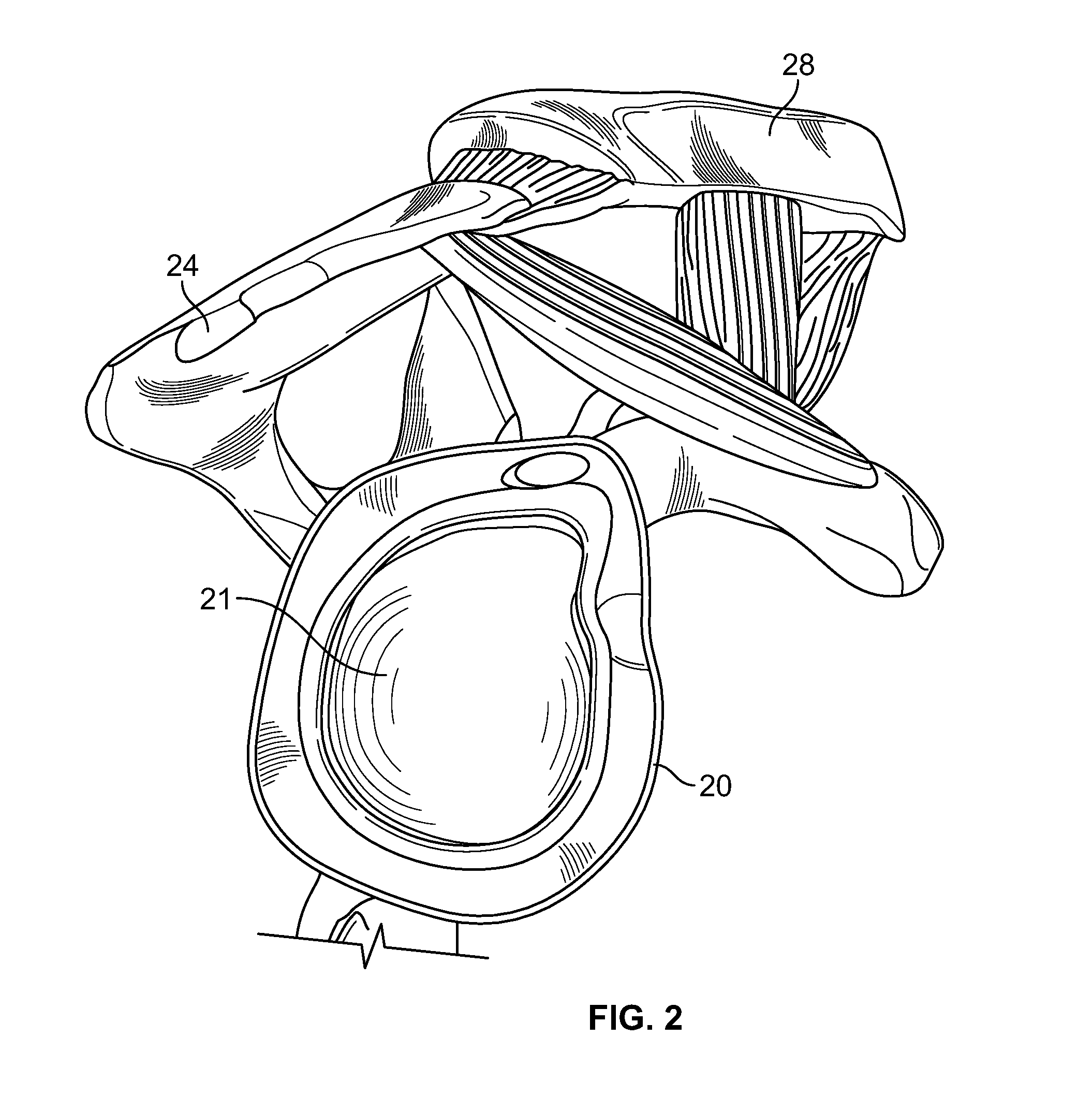Patient-specific cutting guide for the shoulder
a cutting guide and shoulder technology, applied in the direction of bone drill guide, surgery, diagnostics, etc., can solve the problems of decreased mobility, pain, stiffness, bone and joint damage, etc., to achieve high degree of accuracy, accurate and quick shoulder arthroplasty procedure, and restore the natural alignment of the join
- Summary
- Abstract
- Description
- Claims
- Application Information
AI Technical Summary
Benefits of technology
Problems solved by technology
Method used
Image
Examples
Embodiment Construction
[0020]FIG. 1 shows the general anatomy of shoulder joint of a patient. Humerus 12 of joint 10 includes a neck portion 13, a head portion 14 and a shaft portion 17 having a greater tuberosity 16 and a lesser tuberosity 18. Between greater and lesser tuberosities 16, 18 is bicipital groove 15. As shown in FIGS. 1-2, scapula 22 terminates at glenoid 20 having a cavity 21 in which an outer surface 11 of head portion 14 rotates within. Along with humerus 12 and scapula 22, the acromion 24, rotator cuff 26 and clavicle 28 all provide support to the range of motion of the shoulder joint 10 of the patient.
[0021]FIG. 3 is a posterior view of a proximal portion of humerus 12 of shoulder joint 10. Head portion 14 includes outer surface 11. Also shown is bicipital groove 15, a substantially straight surcical neck line 25 and a curvy anatomical neck line 27. Outer surface 11, biciptal groove 15, substantially straight surcical neck line 25 and curvy anatomical neck line 27 are all anatomical fea...
PUM
| Property | Measurement | Unit |
|---|---|---|
| diameter | aaaaa | aaaaa |
| angle | aaaaa | aaaaa |
| shaft angle | aaaaa | aaaaa |
Abstract
Description
Claims
Application Information
 Login to View More
Login to View More - R&D
- Intellectual Property
- Life Sciences
- Materials
- Tech Scout
- Unparalleled Data Quality
- Higher Quality Content
- 60% Fewer Hallucinations
Browse by: Latest US Patents, China's latest patents, Technical Efficacy Thesaurus, Application Domain, Technology Topic, Popular Technical Reports.
© 2025 PatSnap. All rights reserved.Legal|Privacy policy|Modern Slavery Act Transparency Statement|Sitemap|About US| Contact US: help@patsnap.com



